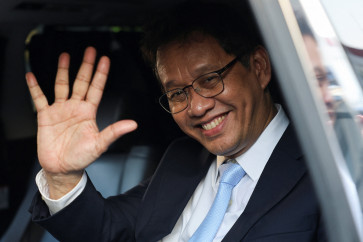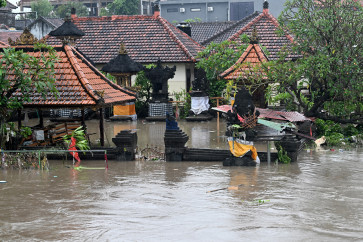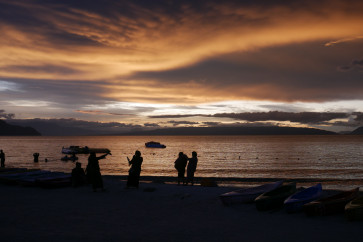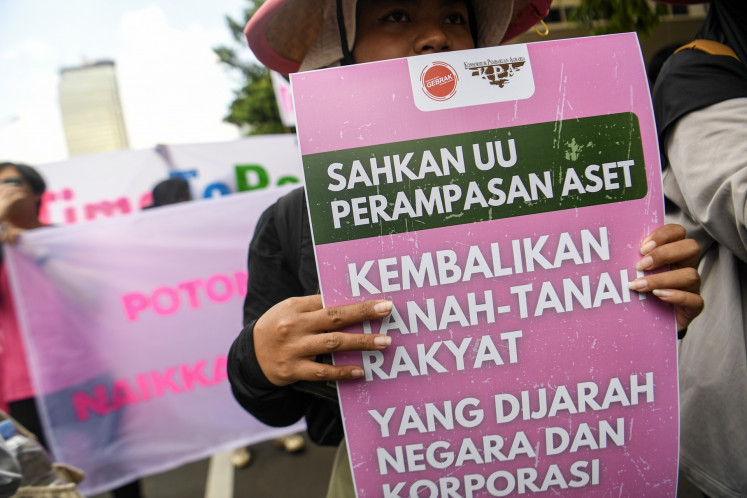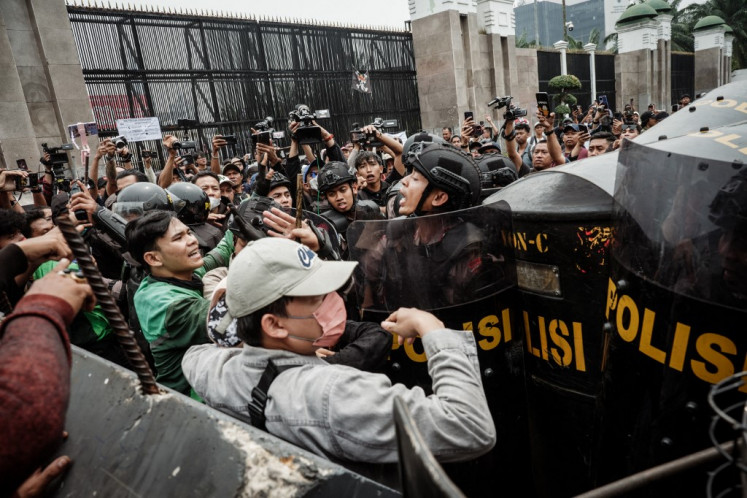Popular Reads
Top Results
Can't find what you're looking for?
View all search resultsPopular Reads
Top Results
Can't find what you're looking for?
View all search resultsMega-urbanization of Jakarta-Bandung region
The physical development of Jakarta Metropolitan Area (JMA) and Bandung Metropolitan Area (Bandung Raya) has formed an urban belt form Jakarta to Bandung of about 200 kilometers long, reflecting a formation of mega-urban region characterized by a mixture of rural and urban activities and a blurred rural-urban distinction in Jakarta-Bandung Region (JBR)
Change text size
Gift Premium Articles
to Anyone
T
he physical development of Jakarta Metropolitan Area (JMA) and Bandung Metropolitan Area (Bandung Raya) has formed an urban belt form Jakarta to Bandung of about 200 kilometers long, reflecting a formation of mega-urban region characterized by a mixture of rural and urban activities and a blurred rural-urban distinction in Jakarta-Bandung Region (JBR).
Population growth in the urban centers, notably Jakarta and Ban-dung, has significantly declined, whereas the population growth in the adjacent areas is relatively high, which may reflect the rapid spillover of Jakarta and Bandung City to the surrounding areas.
In fact, a large number of many former residents in the neighborhood of the Jakarta center had moved to the adjacent areas, including Bogor, Tangerang, Bekasi and Depok. The significant increase in the number of urban localities in JBR also manifests the urban transformation in the region.
Although the economic crisis in the late 1990s and early 2000s saw a significant slowdown of development of this region due to the decline in demand for land for industrial estates and new town development in the region, JBR has been developing rapidly since the mid-2000s as it was before the Asian economic crisis. At present, JMA and Bandung Raya are experiencing a transformation from a single- to a multi-core city.
The development of socioeconomic activities in JBR has caused several environmental problems, most notably traffic congestion due to heavy flows of commuters between Jakarta and its surrounding areas, air pollution in some industrial areas and excessive groundwater extraction.
The region also faces the problem of uncontrolled land conversion resulting from many inconsistencies in the implementation of spatial plans by local governments due to pressures for profitable interests of the private sectors and individuals.
A number of new towns and large-scale residential areas has been developed in JBR since 1980s. However, most of the new towns in the region are socioeconomically dependent on Jakarta and Bandung and have functioned as "dormitory towns" instead of self-contained ones. Many of the new towns are designed as exclusive residential areas resembling the "gated communities" in the Western countries.
In fact, new town developments, especially in JMA, have reinforced spatial segregation by lifestyle and income status in the area. Likewise, industrial estates are also growing in JBR due to development of domestic and direct foreign investment in the region for proximity and easy access to Jakarta.
Jakarta and Bandung cities are now directly inter-connected by several new turnpikes that were constructed in the early 2000s. It has made a large number of Jakarta middle- and upper-class residents travel to Bandung during the weekend for shopping and recreation. In turn, it has fostered development of economic activities in the city, including restaurants, hotels and garment factory outlets, but it has also worsened the traffic.
The new regional autonomy and fiscal decentralization policy makes urban development in JBR become a local authority affair, which implies that it has to be planned and implemented according to the local needs by the local authority and communities, while in the past it was strictly under the central government control and direction.
However, as in other kabupaten (regencies) and kota (municipalities) in Indonesia, there is a tendency if most of the local governments in JBR try to exploit local resources excessively, including water and land, to maximize their own income. Moreover, the parochialism attitude of many local governments has caused a number of problems in services, which need cross-border cooperation, including water supply and waste management.
The mega-urbanization process in JBR is continuing, even with a faster rate than that in the past.
However, the new regional autonomy and fiscal decentralization policy tend to make the region fragmented in terms of an integrated urban region, as each of the local governments in the region has their own discretion to manage their territoriality, which might potentially result in excessive resource utilization in the region.
It should be kept in mind that JBR is a functional region that should be managed as an inseparable one through an integrated spatial development plan. Institutional development is now critical to ensure the sustainability of the region.
The writer is a professor at the School of Architecture, Planning and Development, Bandung Institute of Technology.


